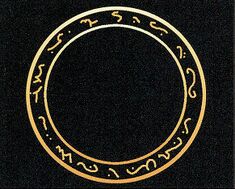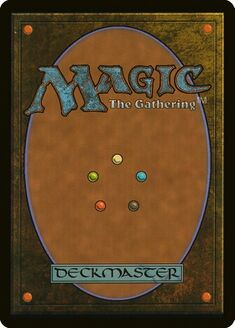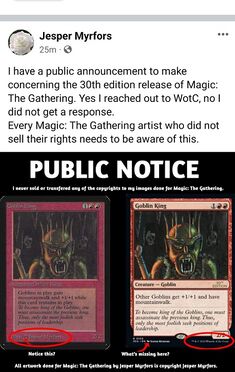Jesper Myrfors
| Jesper Myrfors | |
|---|---|
| General Information | |
| Born | Sweden |
| Status | Inactive: Alpha to Fallen Empires |
| Style | Acrylic Gouache, Horrific Elements |
| Education/ Training | Cornish College of the Arts |
| Scryfall Statistics | |
|
57 cards | |
Jesper Myrfors is Magic: The Gathering's first art director, and one of the original twenty-five artists.[1] With Christopher Rush, he created the card back shared by all tournament-legal Magic cards. He worked for Wizards of the Coast from June 1993 until late 1994, and again from 1997 through August 2000. Since leaving the company, he has occasionally been a vocal critic of its leadership and practices.
During his time at Wizards, Myrfors filled several roles, though in the early years of Magic, those roles were not always clearly divided.[2] He worked chiefly as art director, but was also credited as an artist, lead designer of The Dark, and author of some of the card texts in Alpha.[3]
Education and art style
He graduated from Cornish College of the Arts in Seattle with a Bachelor of Fine Arts in Illustration. While in college, he met future Magic artists Anson Maddocks, Andi Rusu, Amy Weber, Sandra Everingham, and Cornelius Brudi.[4][5]
Myrfors prefers to use acrylic gouache and pen and ink, but employs digital methods for design work.[4] He is a fan of Lovecraft's work and its dreamlike qualities, and owns a handwritten original of one of Lovecraft's poems, but expressly distances himself from Lovecraft's racist views.[5] He has named other Magic artists, including Rob Alexander and Ian Miller, as direct influences on his own work.
Art director

Myrfors submitted a portfolio to Lisa Stevens at Wizards of the Coast, hoping to contribute to Talislanta. She responded that his art was inappropriate for that franchise, but offered him the opportunity to submit further spec work. Those later submissions impressed Talislanta's creator, and Myrfors was hired. As a new hire, he was initially not trusted with knowledge of the then-unreleased Magic: The Gathering. When he did get the chance to play the game, he was impressed by the game's potential and requested that his future compensation be in company stock, rather than a cash salary. He was offered the role of art director for Magic while he was still a year away from completing his art degree. Lisa Stevens moved on to other roles at the company.[5]
Myrfors pushed Wizards to commission original artworks for cards, rather than buying the rights to existing works. He argued that it would be far cheaper, and the initial Magic artists were paid $50 in cash, $50 in stocks, and were given 50 artist proofs per work.[6] He selected the artists for Alpha from among his art school acquaintances, artists he had grown up with like Tom Wänerstrand, those he had worked with on other role-playing games, and recommendations from artists and art directors he knew. Following Alpha, he requested portfolios and sought further artists at conventions.[5] He intentionally sought out less-established artists to ensure that the game would look unique.[7]
Wizards of the Coast did not initially provide artists with a style guide. Myrfors assigned cards to artists by calling them on the phone and reading a list of available card names, allowing artists to pick which ones they wanted to illustrate.[8] Myrfors felt that allowing the artists as much creative freedom as possible would create a stronger product, and he appreciates the diversity of the early artwork.[5] All seven cards that were banned in 2020 for being culturally offensive were printed during his tenure as art director, although some were banned for their textual elements, rather than their art.[9]
Despite the general lack of constraints on his artists, Myrfors did prohibit digital artwork. However, on the day that Beta was to go to press, the Magic team realized that Circle of Protection: Black had been left out of Alpha and still did not have artwork, so with no art supplies on hand, he violated his prohibition to produce artwork within the deadline.[10]
At the start of the Rath cycle, he collaborated with artists Mark Tedin, Anson Maddocks, Anthony Waters, and Matt Wilson to create the first style guide.[11] He wrote an afterword to the 2014 art book, The Gathering: Reuniting Pioneering Artists of Magic.

Card frame and back
Myrfors designed the original card frame and card back. The textures on the card back were mostly derived from sample backgrounds that Myrfors had previously created while seeking gig work from photography studios. The blue oval was extracted from a painting and added to the card back in response to a dare from Lisa Stevens, who challenged Myrfors to utilize a "not very good" artwork that had been gifted to her.[5][12] Christopher Rush outlined the "Magic: The Gathering" text and created the mana symbols.[6] The "Deckmaster" logo was a last-minute addition demanded by the CEO. [5]
On the card front, Myrfors chose the font Goudy Medieval for the card names, and chose to have all of the text except for the rules text in white. Mark Rosewater argued that the choice of text color made cards too hard to read at a distance, and made names especially difficult to see on white cards. He also took issue with some of the texture choices. Richard Garfield felt that Myrfors' frame did not put enough emphasis on creatures' power and toughness. Later, art director Jeremy Cranford described the frames as drawing too much attention to themselves, rather than the card art. These criticisms led to the creation of the 2003 "Modern" frame.[13]
Departure and return
Myrfors resigned as art director after The Dark, a choice that he credits to occupational burnout from working 21-hour days.[5] He was succeeded by Sandra Everingham and Sue Ann Harkey, but was rehired as art director following Portal. Harkey attributes that decision to Mark Rosewater wanting an art director who played Magic, and left the company in protest of the pay gap between herself and Myrfors.[2]
During his second stint as art director, Myrfors found that the company had become "too big" and "too political", and grated against taking direction from people who had never played the game. He left Wizards again in August 2000, following a disagreement with the company's leadership over the role of Captain Sisay in the Weatherlight Saga. In a 2015 interview, he recounted that an executive had told him that the game's players "didn’t care about black women", and that Gerrard would be the main character of the story. Myrfors was offended by the racist statement and chose to leave the company. In the same interview, he noted that the leadership responsible for that story decision was no longer with Wizards of the Coast.[5]
Artist
Several cards in Alpha were illustrated by Myrfors. On at least some occasions, he contributed art when the intended artist was unable to provide a finished work, or when a card was added to the card file late in the development process.[5] Fallen Empires is the last set to include new artwork by Myrfors. Until the release of 30th Anniversary Edition, his artwork had last been reprinted on Time Spiral's timeshifted sheet, and before that, in Sixth Edition in 1999.
- Notable artworks by Jesper Myrfors
-
The art for Ironroot Treefolk was the first completed Magic card art.[10]
-
Alchor's Tomb was intended to be Alchor's Tome, but the error was spotted early enough to change the card's name to match the art.[14]
-
Cosmic Horror - One of several cards where his Lovecraftian inspirations are extremely obvious.
-
Goblin King is one of the first lords.
Lead designer
The Dark was created by Myrfors. He saw a gap in Wizards' release schedule and worked to ensure that he would have his set ready to fill that slot. He wrote the set to allow himself to publish artwork with themes and styles he preferred. It also allowed him to fulfill requests from other Magic artists for chances to make darker artwork.[5] While he does not deny a link between The Dark and the Dark Ages, he says that the set is inspired by Lovecraft, the Spanish Inquisition, American puritanism, his love of horror, and his distrust of organized religion. He wanted to demonstrate that white was "not all kisses and flowers" and can be realized in theocracy and fascism.[7][18] However, he did not perform the art direction for his set. The Dark was art directed by Sandra Everingham.[19] Steve Bishop and Beverly Marshall Saling also contributed to The Dark's design.[7]
- Selected artworks by Myrfors in The Dark
-
Myrfors referenced a photo taken while exploring underground at Fort Worden to paint The Fallen.[22]
Later criticisms

Myrfors has offered several complaints about Wizards of the Coast in the decades since he left the company. As of 2015, he believed that the art direction favors detailed artwork that is cluttered and unreadable at the small scale of the cards. He stated that Magic suffered from the decision to no longer commission artist Quinton Hoover, which occurred roughly five years before Hoover's death. Despite those concerns, he acknowledged the excellence of the artists active then, and said that some of the modern artwork makes his jaw drop.
He feels that early artists were betrayed by Wizards' leadership when payment for artwork transitioned from lifetime royalties to up-front commissions.[5] That change was initiated during the tenure of Sue Ann Harkey, who accepted that the company's leadership had positioned her as the "bad guy".[2] When his Alpha artwork was reprinted in 30th Anniversary Edition, he posted on social media to highlight a change in the copyright notice on those cards. He asserts that, like other artists who were initially paid royalties, he never surrendered the copyright to his artwork.[23]
When Wizards of the Coast deemed a set of seven cards culturally offensive in 2020, Myrfors posted a response to clarify that the figures depicted on Invoke Prejudice were inspired by the Spanish Inquisition rather than the KKK, but agreed with Wizards' decision.[9] He has praised the company's commitment to representing diversity.[5]
Other work
After his first departure from Wizards, Myrfors art directed for another card game, Shadowfist.[5] With fellow Magic artist Brian Snoddy, he created the card game Deadfellas.[7]
He co-founded Hidden City Games with his wife, Julie "Spoops" Myrfors, with whom he has also produced a children's book.[24][4] Hidden City published the game Clout: Fantasy.[25] The couple lost their house when that company failed.[5]
Myrfors is credited as an artist for Greyborn Studios as of 2025.[26]
Personal life
Myrfors was born in Stockholm, and his family moved to the United States when he was two years old. He retains his Swedish citizenship.[5] He once dated artist Kristen Bishop.[22] Jesper and his wife Julie Myrfors (née Meyers) married in 2005 and have a daughter.[27][24][5]
Gallery
References
- ↑ Darren Davis (December 18, 2017). "Spell Casters, a 'Magic: The Gathering' Origin Story". Seattlemet.com. Archived from the original on August 23, 2022.
- ↑ a b c Jesse Mason (April 21, 2015). "an interview with sue ann harkey, magic's greatest art director". killing a goldfish.
- ↑ John Carter (December 25, 2004). "The Original Magic Rulebook". magicthegathering.com. Wizards of the Coast. Archived from the original on 2018-02-10.
- ↑ a b c Jesper Myrfors: The Original Artist Visionary of Magic: The Gathering. MTG Stores (2010-09-08). Retrieved on 2010-09-10.[dead link]
- ↑ a b c d e f g h i j k l m n o p q Interview with Jesper Myrfors (August 7, 2015). Archived from the original on March 4, 2024.
- ↑ a b Daniel Chang (2010-05-12). "MTGStores.com presents MTG Artist Jesper Myrfors' Estate Collection:: Part 4 of 8". MTG Stores. Retrieved on 2010-09-10.[dead link]
- ↑ a b c d Islandswamp (April 14, 2016). "Magic History: Art of Darkness with Jesper Myrfors". MTGGoldfish. Archived from the original on November 13, 2024.
- ↑ Daniel Chang (2010-06-19). "MTGStores.com presents - Lunch with Jesper Myrfors, Mark Tedin & Anson Maddocks Part 5 of 5". MTG Stores. Retrieved on 2010-09-10.[dead link]
- ↑ a b Rob Wolfe (June 22, 2020). "'Racist' and 'culturally offensive' images pulled from popular card game Magic: The Gathering". Archived from the original on March 29, 2024.
- ↑ a b Daniel Chang (2010-05-12). "MTGStores.com presents MTG Artist Jesper Myrfors' Estate Collection :: Part 2 of 8". MTG Stores. Retrieved on 2010-09-10.[dead link]
- ↑ Toby Wachter (November 04, 2002). "Behind the Canvas: Mark Tedin". magicthegathering.com. Wizards of the Coast. Archived from the original on 2019-09-30.
- ↑ Daniel Chang (2010-05-12). "MTGStores.com presents MTG Artist Jesper Myrfors' Estate Collection:: Part 7 of 8". MTG Stores. Retrieved on 2014-10-05.[dead link]
- ↑ Mark Rosewater (January 27, 2003). "Frames of Reference". magicthegathering.com. Wizards of the Coast.
- ↑ Nick Wolf (May 2, 2024). "Magic Cards Where Artists Misunderstood the Brief". Commander's Herald. Archived from the original on February 13, 2025.
- ↑ Ignacio (December 8, 2024). "The 32 Worst and Most Horrible Card Arts in Magic". Draftsim.com. Archived from the original on November 6, 2023.
- ↑ Samuel Sturgeon (Oct 29, 2022). "10 Magic: The Gathering Cards With The Worst Art, According To Reddit". screenrant.com. Archived from the original on November 10, 2022.
- ↑ The James Theory (Jan 31, 2024). "Top 10 WORST Magic The Gathering Card Art EVER!". Youtube.
- ↑ Daniel Chang (2010-05-12). "MTGStores.com presents MTG Artist Jesper Myrfors' Estate Collection:: Part 1 of 8". MTG Stores. Retrieved on 2010-09-10.[dead link]
- ↑ Ice, Kathy, Beverly Marshall Saling, & Rick Saling Marshall. (1994). "The Dark". The Duelist. Issue 2, Summer 1994.
- ↑ Monty Ashley (December 9, 2008). "Ask Wizards: Gleemox and Elves of Deep Shadow". magicthegathering.com. Wizards of the Coast. Archived from the original on 2018-02-26.
- ↑ Amber Bird. "Amber Bird | About". Archived from the original on June 21, 2024.
- ↑ a b Arting Around—Jesper Myrfors Interview (June 29, 2015). Archived from the original on February 18, 2025.
- ↑ John Dodge (Oct 9, 2023). "Iconic Magic: The Gathering Artist Questions New Card Copyright Stamps". CBR. Archived from the original on May 1, 2025.
- ↑ a b Julie Myrfors. "About Spoops Art". Spoops Art. Archived from the original on August 28, 2016. Retrieved on 2010-09-10.
- ↑ John Grigsby (2005-09-26). "AN INTERVIEW WITH PETER ADKISON AND JESPER MYRFORS". d20 Magazine Rack. Archived from the original on September 25, 2005. Retrieved on 2010-09-10.
- ↑ Team — Greyborn Studios. Archived from the original on April 23, 2024.
- ↑ Marriage licenses. Everett Herald (May 21, 2005).

![The art for Ironroot Treefolk was the first completed Magic card art.[10]](https://files.mtg.wiki/thumb/Ironroot_Treefolk.jpg/120px-Ironroot_Treefolk.jpg)
![Alchor's Tomb was intended to be Alchor's Tome, but the error was spotted early enough to change the card's name to match the art.[14]](https://files.mtg.wiki/thumb/Alchor%27s_Tomb.jpg/120px-Alchor%27s_Tomb.jpg)


![Word of Command has been frequently named one of the worst card arts in Magic.[15][16][17]](https://files.mtg.wiki/thumb/Word_of_Command.jpg/120px-Word_of_Command.jpg)




![Elves of Deep Shadow. Modeled by musician Amber Bird.[20][21]](https://files.mtg.wiki/thumb/ElvesOfDeepShadow.jpg/120px-ElvesOfDeepShadow.jpg)



![Myrfors referenced a photo taken while exploring underground at Fort Worden to paint The Fallen.[22]](https://files.mtg.wiki/thumb/The_Fallen.jpg/120px-The_Fallen.jpg)








